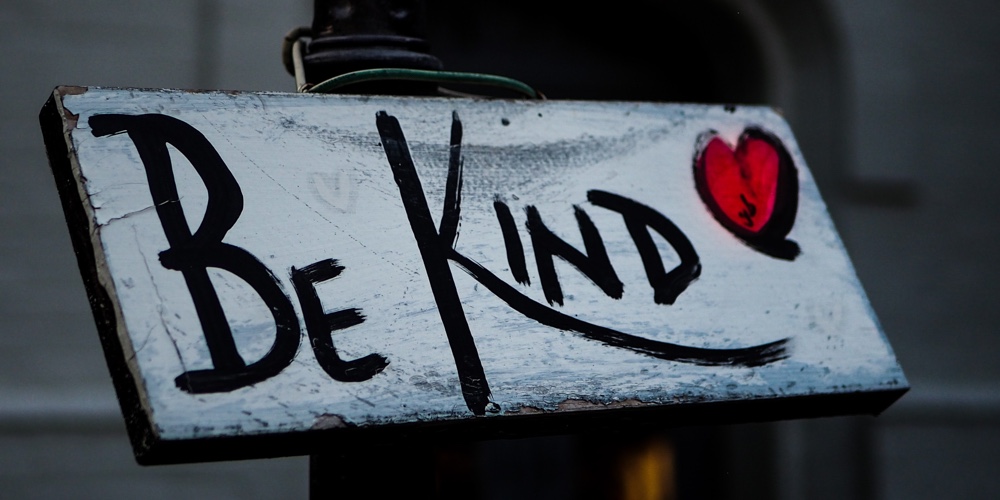Can credit unions make us happier?
How to make kindness more than a brand promise

Are we happy?
I’m guessing that question has confounded humans from the first moment we were able to catch our breath and ask that question.
For the last decade, we’ve had a semi-definitive answer, courtesy of the United Nations’ annual World Happiness Report (WHR).
This survey asks people in 150 countries to self-report their level of happiness. Each survey participant is asked to imagine happiness as a ladder with rungs numbered from “0” at the bottom to “10” at the top. The top of the ladder is the best possible life for them; the bottom of the ladder is the worst possible life for them.
I fully expected to learn that happiness in the United States had taken a big hit during these dealing-with-pandemic days. Instead, l discovered to my surprise and, well, happiness, that the U.S. was happier in 2021 than it had been before the pandemic. We moved from 19th to 16th happiest country in the world—a gain that’s at least mildly encouraging, even if having a double-digit rating is not. And, in case you’re wondering, Finland was the happiest country for the fifth year in a row.
What I found especially interesting about that improvement is what fueled it: Kindness.
The world was a kinder place in 2021!
My immediate reaction upon learning this was incredulity—how could a year that saw an insurrection at our nation’s capital, incidents of road rage hitting a record high, and death threats against school board members be a year when we were kinder than in the past?
But, according to chapter 2 of the World Happiness Report, overall levels of kindness did indeed increase. Yes, we certainly still felt negative emotions—who didn’t have good reasons to feel sadness, worry and anger last year?—but they were offset by people making more donations, volunteering more, and helping more strangers. In fact, these “three measures of prosocial behavior… all showed increases in 2021 in every global region.”
In short, when times were tough, people stepped up.
Thinking back to my own experiences of this past year, I found I could quickly come up with many examples of kindness. To name a few:
- Someone in my neighborhood started putting up wood signs on telephone poles saying things like “you are beautiful” and “Everything is going to be okay.”
- When a neighbor of mine was hospitalized for long Covid, dozens of people chipped in to take on his favorite cause: picking up trash around town.
- After learning about the nationwide blood shortage, a group of neighbors took it upon themselves to donate blood to help out and encourage others to do the same.
Most of these weren’t big or particularly memorable things—they were the small, everyday kindnesses that keep our society functioning smoothly, but often fall just beneath our active notice.

The author joined a group of neighbors to donate blood after we found out about nationwide blood shortage.
Clearly, kindness matters. And while kindness is probably not the first word that comes to mind when most people consider the broader financial industry, it is embedded in the credit union mission — one of several traits that set credit unions apart.
But it’s important not to get complacent with our kindness — it needs to go beyond greeting members with a smile. And there are self-serving reasons to be kind, too. After all, happy employees, happy members, and happy communities will all help your credit union continue to grow and thrive.
So how can credit unions up their kindness game?
Kindness on your team
There are myriad ways to show kindness to employees. At minimum, provide living wages, strong benefit packages and opportunities to grow professionally and personally. If your credit union isn’t delivering in these critical areas, start here.
Recognize it’s highly likely some of your employees are dealing with needs and traumas they might be uncomfortable sharing—health issues, challenges with addiction, domestic abuse, and more. Work to create a culture that prioritizes human connection, vulnerability and authenticity so employees feel comfortable asking for help.
Judah Musick, former Chief Innovation Officer at Red Rocks Credit Union, advised on The Remarkable Credit Union podcast that if you’re wondering what your community needs, think first about what your employees need. From a financial wellness standpoint, the hierarchy of employee needs are not typically met by most HR departments. While benefits packages tend to focus on retirement savings and paid volunteer hours, most employees are focused on creating positive cash flow, building emergency savings, and getting out of consumer debt.
Did you know a 2017 report from the Center for Financial Services Innovation, found that over half of credit union employees in their study were struggling financially? Could that be true at your credit union too—especially after two-plus years dealing with COVID-related traumas?
Of course, kindness is not just about meeting needs — it’s also about fostering joy. At my worker-owned marketing agency, PixelSpoke, we’ve created an aptly named Joy Team, which is tasked with fostering connection, trust, and yes, joy.
When I interviewed the Joy Team on our podcast about what they had learned in 2020, they said the bottom line is to listen, listen, listen. The world is changing quickly and how you support employees this month might look entirely different than it did last month. Listening mechanisms can be formal or informal, and having options for “headlines” or “stress level” in a daily huddle is a great way to get the pulse of the team, in addition to more standard surveys.
The key is to meet people where they are at, help them to find things that lift them up, and accept that we all need to engage with our emotions to be healthy and balanced. Ask how you can lighten their load—and deliver that help if you can. For instance, sending someone a meal is a small-ish thing that can make a big difference. Or maybe send them “surprise and delight” boxes as VP of People Teshia Davis does at SCU.
During a recent podcast, Teshia said, “We take a very strong stance in making sure that we are emotionally connecting with our employees, that our leaders are leading with empathy, while they’re focusing on appreciation.”
Kindness amongst your members
What can your credit union do to improve not just the financial well-being of your members, but their well-being, period? I had the opportunity to discuss the importance of putting empathy into action back in the early days of Covid with Gigi Hyland, Executive Director of the National Credit Union Foundation. At the time credit unions everywhere were in the thick of finding ways to help members keep their lives together during Covid—truly putting themselves into the shoes of their members to uncover their most critical needs and ways to help them most.
Here are just a few of the examples Hyland shared of credit unions practicing kindness to members:
- New products to help improve cash flow
- Fee deferral—or, in many cases, fee elimination
- Providing money for critical resources like food
- Proactive outreach to members via personal phone calls to learn what they needed during challenging times
We need empathy on an ongoing basis, not just during times of crisis. What special measures did your credit union take during Covid that you might want to consider revisiting or continuing? Can you still pick up the phone and check in on your members from time to time or make some of those new products permanent? One credit union we know (among many) did away with overdraft fees forever, seeing it as a business practice that didn’t make sense in 2022.
Again, a little kindness can go a long way. Through its 2022 Kindness Contest, O Bee Credit Union is incentivizing and rewarding members who show kindness during a branch visit.
Empowering your employees to give branch visitors gift cards, as this financial services representative did at Neighborhood Credit Union, is a lovely and elegant way to surprise and delight your most loyal members.
At PixelSpoke, we created an online Random Acts of Kindness generator for our client Allegacy — a fun way to engage website visitors and inspire them to spread kindness offline.
Kindness in your community
One program we’re proud of here at PixelSpoke is our quarterly employee donations program. Every quarter we randomly select two employees to make donations to causes they care about. Provided the cause is aligned with our company policies, they get to present to the entire company about what the cause is, why it matters to them, and how our donation will make a difference. Each selected employee gets to donate 2.5% of our quarterly profits, which is a meaningful amount for most local nonprofits.
We initially tried a matching donations policy, but we found that a “no strings attached” approach created a real sense of excitement and enthusiasm, and also helps to build the “muscle” of kindness in our team.
In the credit union space, I’m especially heartened by community giving efforts that go beyond the proverbial Big Check. One great example is CU FORWARD, a statewide day of kindness in Minnesota and the brainchild of the Minnesota Credit Union Network. At this event, credit union employees engage in all sorts of creative ways to give back to their communities, like paying for strangers’ groceries, lunch or gas; bringing treats to frontline workers; and writing thank you notes to first responders.
This event was the result of the Network asking itself three simple questions:
- How do we spread kindness?
- How can credit unions come together and do more than lobby for tax breaks?
- How can we grow the credit union movement and respond to the pressing challenges of our time?
According to Ben Hering, director of engagement, and Mark Cummins, president and CEO, at the Network, one of the most powerful benefits of this day was that it gave credit unions a way to bring the WHY behind credit unions—people helping people—to life in a memorable and tangible way. They see this annual kindness event as an opportunity to strengthen trust in our communities, connect people who don’t normally meet and make our society and democracy stronger. And what could be better than that?
Kindness is more than a brand promise. It’s a muscle that needs to be continually developed and cultivated — at all levels, whether internally, amongst your members, or in the community at large. And remember, kindness is contagious. Maybe a pandemic of kindness is just what we need to get us all back on track.





